+506 8969-6565 CONTACT US
+506 8969-6565 CONTACT US

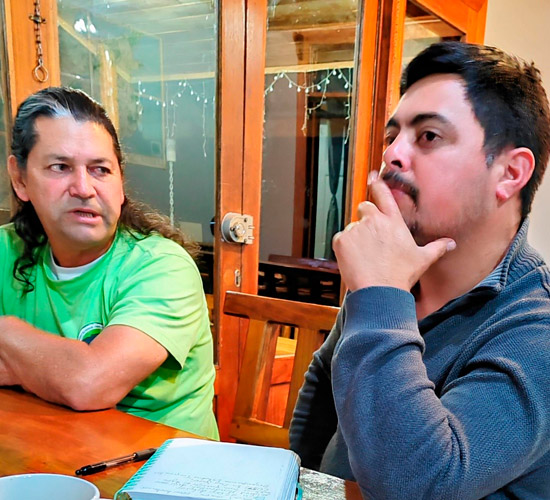
To talk about my Monteverde is to remember a beautiful childhood full of friends, neighbors, pioneers, simple and hardworking people.
My name is Freicer Vindas Marín.
I was born in Puntarenas, in the hospital Monseñor Sanauria de Puntarenas. My mother's name is Énar Marín Murillo and my father's name is Miguel Ángel Salazar. I carry the last name of my stepfather Manuel Vindas Jimenez.
For almost 25 years I have been dedicated to tourism and I want to tell you the history of my town, known as Monteverde.
The first inhabitants of this area were natives of different tribes. Probably the first were the BriBri, who after the arrival of the Spaniards migrated to other areas of the country. A few kilometers to the west, there were also indigenous settlements, where it is now known as San Luis, was a meeting point for other tribes to make exchanges, for example the Chorotegas brought pottery, which they exchanged with the Cabecar for corn. In this area there are still many remains of pottery, sculptures and many other vestiges of those tribes. It is also said that when new settlements arrived in the area, around the 1850's, indigenous burials known as huacas were found with figures carved in gold. This suggests that the human remains belonged to distant tribes that came to the area to leave their chiefs, or some other being very important to them. This is suspected because the native inhabitants of the area did not have gold.
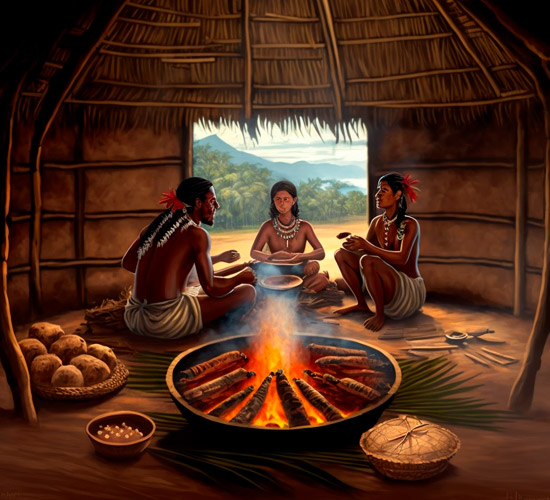
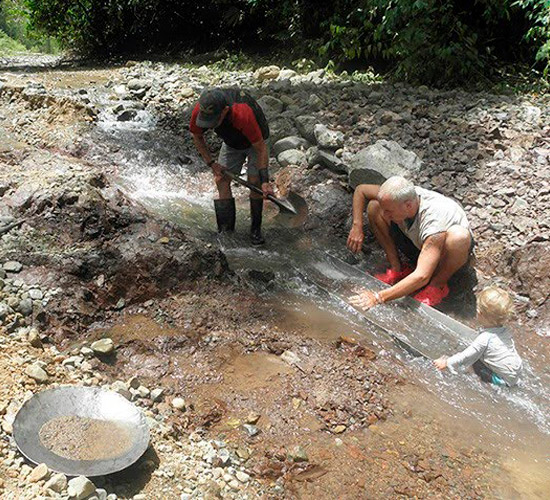
The creation of mining operations in the towns of Guácimal and Las Juntas attracted people from all over the country to work in them. Then these same people went up into the mountains to hunt and eventually create new settlements.
My paternal and maternal grandparents came from Naranjo de Alajuela, (a town about 80 kilometers from San Jose). My paternal grandparents settled in San Luis, this happened around 1920. Many of my uncles were born there, including my uncle Danilo Salazar, who today is 92 years old and still lives on the same farm where my grandparents lived. There is also a farm called La Lindóra, because my grandfather's name was Lindór Salazar, and the place where the current farm is located was his property.
My maternal grandparents came to La Cruz, a town southwest of Monteverde where some relatives already lived, and from there to San Bosco a little further east where they established their own finca. This happened in the 40's. My grandparents made their own farms, this means that the land was covered by mountains, the first thing to do was to make a lane (surrounding the property by cutting trees and undergrowth to determine the boundaries). Then the rest of the trees were cut down to make grazing areas. Wood was used to make the houses and corrals, the roofs were made of wooden shingles or they were woven with cane leaves between rods tied with lianas (lianas). The latter provides insulation...this will help to keep some of the heat in.
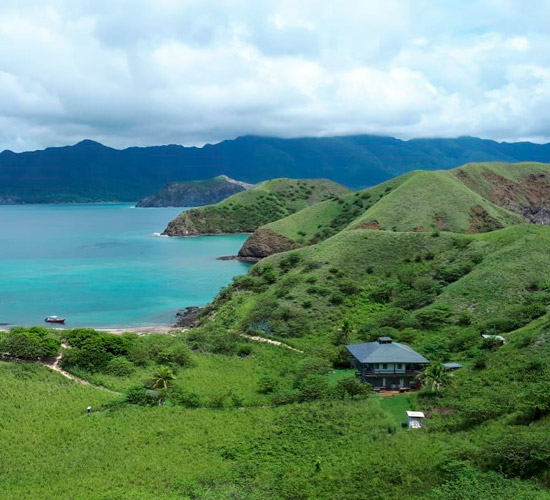
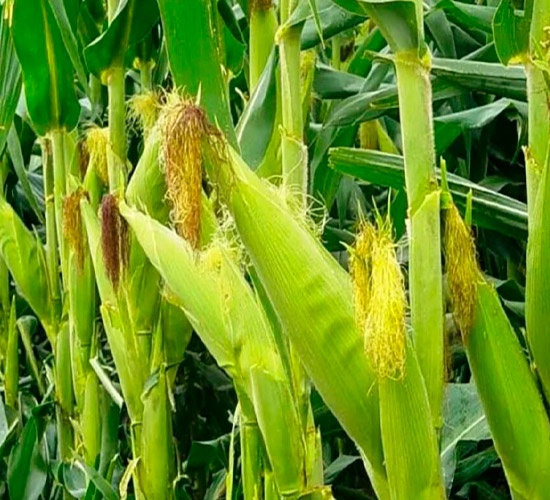
They planted corn, ayote, tubers and raised pigs, chickens and cows. They also hunted Pavas (large birds of the turkey family), wild pigs, tepezcuinte, agoutis and others. There was no oil, so they cooked with lard. There was no refined sugar either, so sweet water was made by boiling the sugar cane, so the water took on the flavor and sweetness of the cane. The same procedure was used to sweeten the coffee and then the coffee was dripped with this sweet water. The beds were made of wooden sticks obtained from felled trees, and the sleeping bags were made of gangoche sacks (traditionally used for the export of coffee). The inhabitants of Santa Elena were very scarce, we can talk about Don Virgilio Rojas Blanco, who arrived in Santa Elena in 1930. According to his grandson Victorino Molina, who grew up with him. At the time of his arrival there were only three other families in the area. One of the people was a lady, who arrived in 1917, whose name Victorino does not remember. She owned a right of about 20 hectares where the shopping center, post office, Choco Café and many other businesses are now located. The lady was not in the area so Don Virgilio, knowing that the property was not his, began to produce on it, clearly the intention was not to appropriate the land, but to take advantage of the fertile land.
When the owner of the property returned, she met don Virgilio, and after getting to know each other, they made an agreement, in which don Virgilio bought the property of approximately 20 hectares (50 acres) for 1,000 Costa Rican colones. The current equivalent of 2 U.S. dollars. Without thinking about it, don Virgilio was about to become a pioneer. He worked the land tirelessly and bought land to produce sugar cane, potatoes, carrots, corn, beans and much more.
Some of his properties are sites of great importance to the people of Santa Elena. Such is the case of the farm that today belongs to the agricultural technical college of Santa Elena, where many of us were educated in the academic and agricultural area. Another of his properties, and according to Victorino the one that was the most productive, is the one that today is the San Luis Wildlife Refuge, administered by the Tropical Science Center.
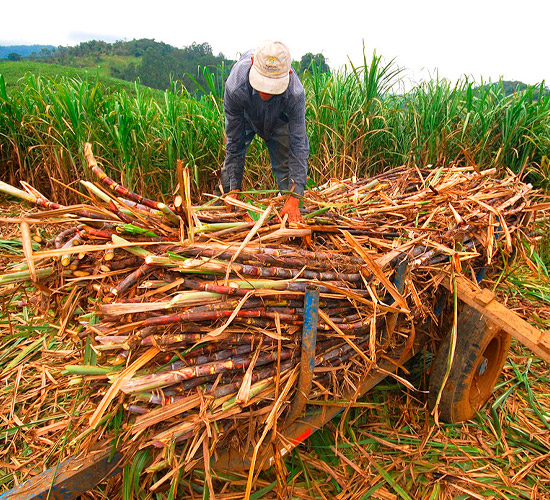

In order to sell his products, don Virgilio had to go to Puntarenas (capital of the province). Even today this can be a challenge for some people. At that time, carrying a load to Puntarenas involved loading several horses and traveling for a couple of days until reaching the Pacific coast and from there by boat to Puntarenas. The Interamerican Highway did not yet exist, so this was the only possible route. A really exhausting work, and often without reward, as Victorino remembers his grandfather told him when he went with a huge load of beans and apparently, that year many people produced beans, not even enough to pay for the sacks where he carried the beans, let alone for the return trip and not to mention the work of a whole year. Some other difficult aspects for the pioneers were the little medicine, the humidity and constant rain, as well as the presence of some potentially dangerous creatures, such as poisonous snakes, jaguars, pumas etc.
Margarita Salazar, Victorino's wife, is also a native of the area; her mother, for example, was the first person to be born in what is now known as Monteverde. Doña Adelia Méndez was born in 1936, specifically where the cheese factory is now. Her grandfather Tito Méndez and her uncle José Méndez, went up from Guacimal to hunt in the place they would call, Cerro plano, and realized that on the other side of that hill there were already inhabitants. We are referring to Santa Elena and La Cruz. Shortly after they themselves would settle in this area.
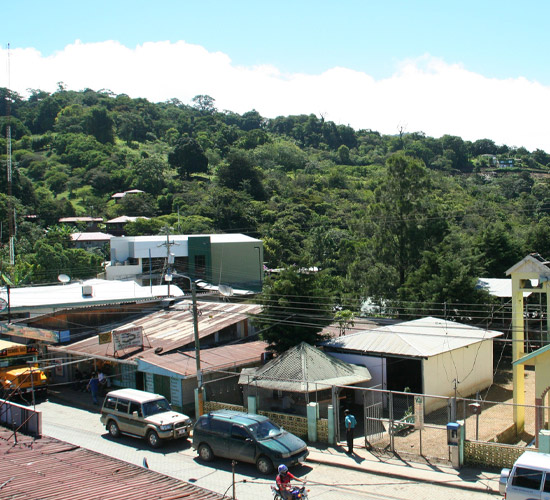
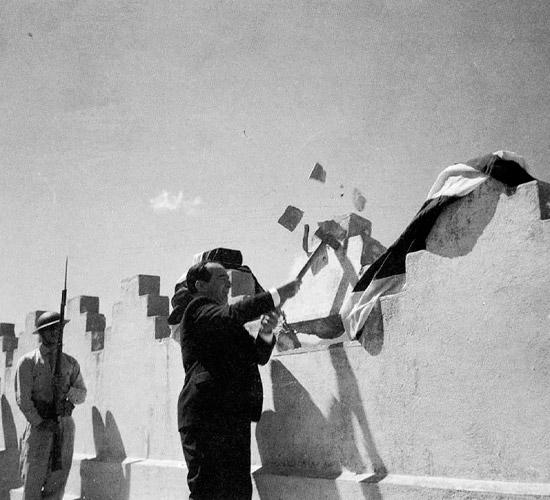
In 1948 the Costa Rican army was abolished and this gave way to another important event for the area. In Alabama, United States, lived a family named Mendenhall. Don Sicel and his wife Mildred, had a commercial relationship with some companies in Costa Rica for some years. They belonged to a Quaker community.
In the run-up to World War II, the United States established compulsory military service for all men between the ages of 18 and 45. Some of the young men from this community were called up for military service. They refused because of their way of life and because Quakers are pacifists. In some states, people who belonged to certain religions or pacifist ways of life were allowed not to report for military service, but Alabama was not one of these states. That is why the young men belonging to this community, who were called to the service, and resisted, were prosecuted in court and put in prison. Canada was a strong option, but since the Mendenhall family was familiar with Costa Rica and knew about the abolition of the army in 1948, they decided to travel to Costa Rica in 1950.
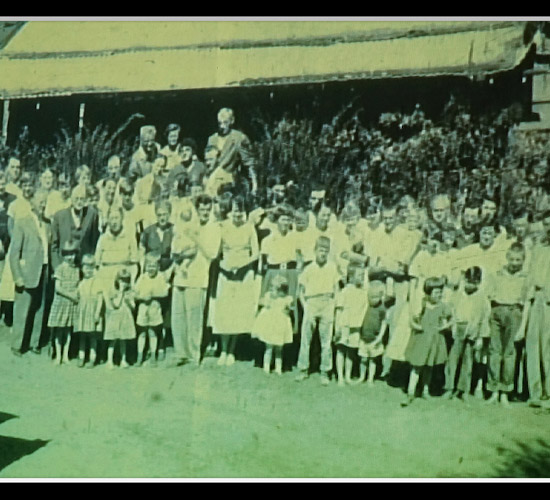
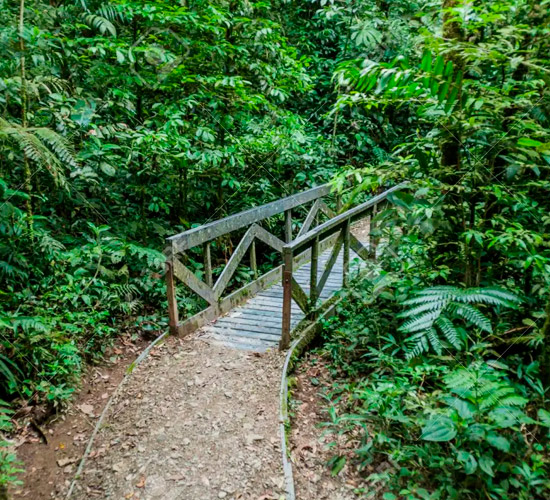
A total of nine families made the journey from Alabama to Costa Rica. Everything that was deemed necessary was transported in trucks from border to border until they reached Nicaragua, where they had to return to the capital of this country, Managua, for the women and children to fly to San Jose, Costa Rica, because there was no road to cross. The men continued to break trail until they were able to reach the central valley. They searched for land for some time until someone told them about an area with sufficient elevation so that the malaria mosquito would not be a problem, and with the ideal climate to establish a dairy.
After a few exploratory trips, Sicel and Mildred bought 1800 hectares of land for $46,000 US dollars, and decided to call it Monteverde.
The Mendenhall's made sure that all the families had their land and soon established the famous Monteverde Cheese factory. Molding the cheeses in metal oatmeal containers (QUAKER) they were shaping not only the cheeses, but also the first industry in the area. It was not long before the cheese was distributed in various regions of the country. It was a great success since most Costa Ricans did not know many of the cheeses that the Quakers produced. Only a few years later the Friends' school was built, which was the first bilingual school in the country.
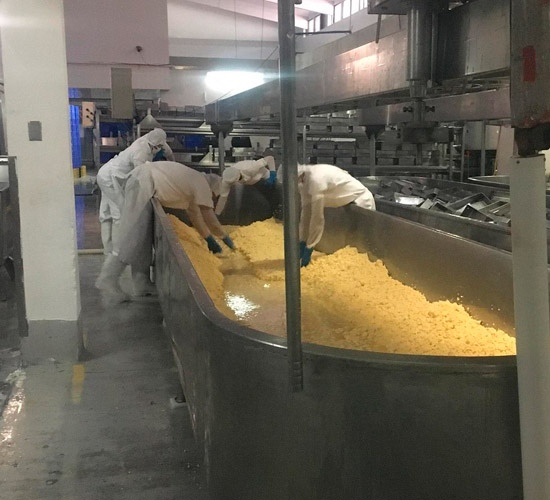
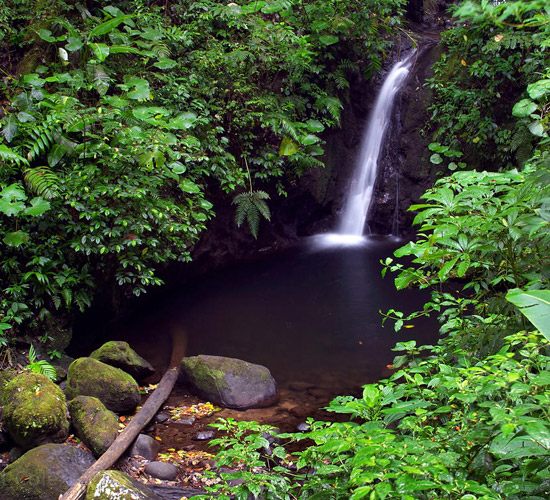
Mrs. Mildred Mendenhall, suggested preserving part of the land, especially the place where the source of the Quebrada Cuecha stream is located, which to this day provides drinking water to the community. This was undoubtedly the beginning of what we know today as eco-tourism.
A few years later, George Powell and some of the Quakers decided to make efforts to establish a conservation area. George realized that there were a large number of species that were not known to science. And with many people trying to settle in the area, logging would be a matter of time.
Found in an area known as the brilliant, a unique species of toad. Called the golden toad. As George realized how crucial the preservation of this area was, he contacted the (OTS) which had its offices in San Jose, in order to get help for the conservation of the area and its species.
Joseph Tossy and Leslie Holdrege were in charge of making this possible and created the Tropical Science Center, which in 1971 opened the first conservation area of Monteverde. The Monteverde Reserve.


Many of the local people who had settled to the east of what is now the Monteverde Reserve were opposed to the creation of this protected area because it directly affected their way of life. For example, the road that used to lead from Santa Elena to Poco Sol de San Carlos was closed near the Monteverde Reserve to prevent people from passing through and to guarantee the preservation of the area. However, the families that were established between these towns did not like the idea of closing the road. Some took it in a better way, such was the case of Don Eladio Cruz, who instead of opposing the preservation, joined it and even donated his farm. Some time later Don Eladio's farm became the station (Eladios).
At this moment, very little is left of the road, at the entrance of the Monteverde reserve, you can see a gate that still protects the road, now it is part of the trails that many local guides use to walk with visitors to go to the continental divide. As a reminder of what it was, it is called a trail (camino).
Very important magazines like National Geographic, the New York times and BBC, make mention of the discoveries of these new cloud covered jungles, home to brightly colored toads and birds with long tails that flit through the clouds like the phoenix of the cloud forest (quetzals).
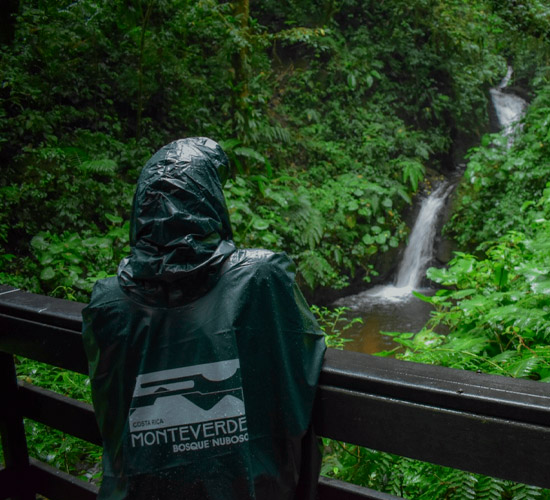
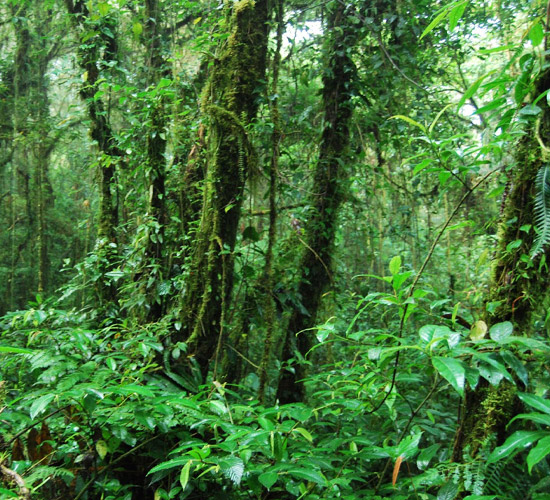
The CCT is aimed at the study and preservation of species, many biologists from different parts of the world come to the CCT laboratories to conduct research, many of them are still here after several decades, and continue to study the cloud forest.
After them came the first tourists, in 1975 a total of 431 visitors to the Monteverde Reserve were registered, today there are hundreds of people entering daily.
Gradually, the need for places to lodge visitors provided locals with a business opportunity, many traded milk or coffee production for lodging, or combined the two. The baqueanos became naturalist guides, and more and more a relationship was established between conservation and the possibility of generating income.
Finally ecotourism is born. Yes, here in Monteverde was created and shaped the eco tourism, today it is hard to believe that it was so, however thanks to this series of events, it was possible, and is the largest source of income for the community. As well as eco tourism, the birth of the canopy tour took place here in the 90's, the first hanging bridges for tourism purposes were also established in the Monteverde area. The new generations of coffee growers saw an opportunity to sell coffee to tourists, and why not give them a tour of the farm so that tourists could learn first hand about the process of coffee and sugar cane. Recently they included cocoa in their visits to complement these iconic and representative products of the area and the country.
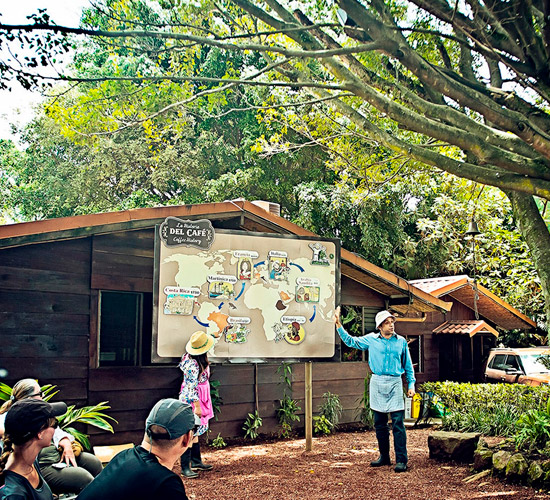
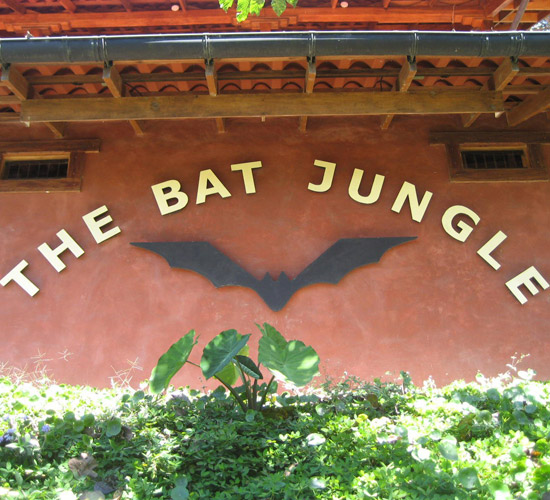
Some biologists, naturalist guides and a few biology enthusiasts also saw an opportunity and created sanctuaries to exhibit their findings and educate locals and tourists. Examples include the Bat Jungle, the Orchid garden and the ranarium.
The migration of people from all over the world identified with this interesting, yet complex village. They also brought gastronomic options. In Monteverde there are Italian, Chilean, Latin fusion, Israeli and good restaurants ..... Many more.
Today for a Monteverdence like me, it is a pride to live in this town. Our generation has the challenge to preserve the tranquility and purity of the town, so that our sons and daughters and many more people can come and enjoy this mix of culture and nature.
© Copyright Monteverde Costa Rica | Powered by PigFlex
